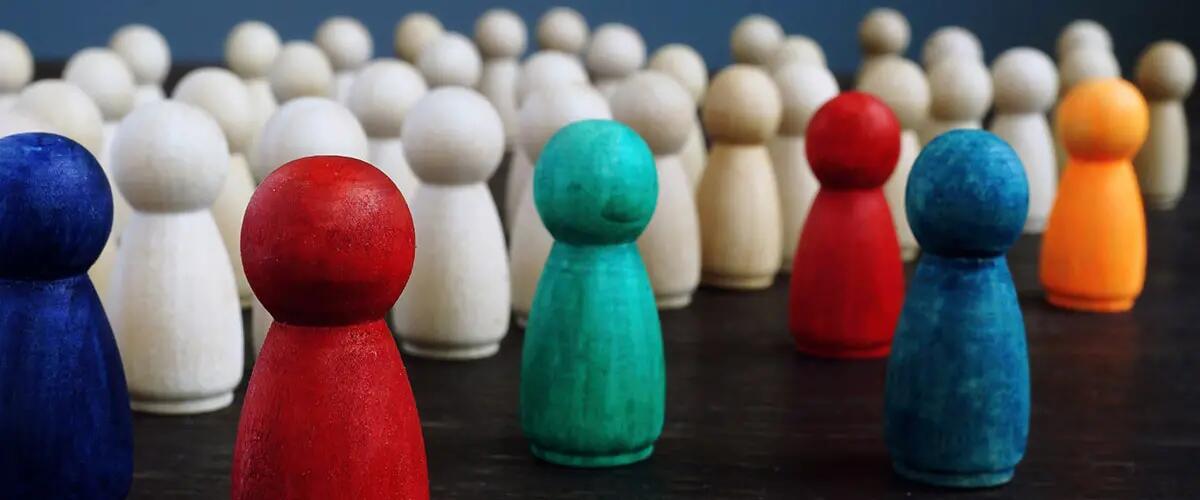
Business Insight: Can't We All Just Get Along
This piece was originally published as a Management Studies Insight Blog by The Journal of Management Studies. It is written by Professor Nancy DiTomaso and based on her recent research paper, "Why Difference Makes a Difference: Diversity, Inequality, and Institutionalization."
After a near-death beating by the police in Los Angeles, California, in 1991 that sparked riots in which 63 people were killed and over 2000 injured, Rodney King famously asked, ‘Can’t we all just get along?’. This unfortunate incident occurred 25 years after the U.S. Civil Rights Act was passed, which itself was followed by riots — some called them rebellions — often sparked by police brutality toward unarmed Black men and women. Thirty years later, in Minneapolis, Minnesota, another killing by the police of an unarmed Black man, George Floyd, led to massive protests for social justice across the U.S. and even in other parts of the world. Between these two events, many unarmed Black men and women have been killed by the police, while inequality in wealth and income has grown, political polarization has become pronounced, and global crises have created constant threats. In this environment, both countries and companies are facing the challenges of people getting along, especially as populations have become more diverse with migrations of people from different races, ethnicities, and religions occurring on a grand scale.
Management scholars have been concerned about people getting along, but not in ways that can explain what has been happening in the social, economic, and political environment beyond work organizations. Although preoccupied with studying intergroup relations, the research on diversity, equity, and inclusion has focused more on the inside of work organizations than on the outside. Many business leaders have adopted the language of diversity, equity, and inclusion (and now belonging), have hired people in specialized positions to oversee programs and initiatives, and have issued statements and set aspirational goals. But change has been slow and incremental, whether measured in terms of representation in positions of authority, income, or job segregation. While there has been some change, inequality in intergroup relations prevails. Further, there is a stark contrast between what large companies have been saying about their commitment to diversity, equity, and inclusion, and what has been going on outside their doors, as it were, among the people at street level.
The solution most frequently offered from diversity scholars and applied by major employers to help people get along has been to reduce bias, with emphasis on what is called implicit or unconscious bias, i.e., the bias that guides how people think about and make decisions about others but about which they are not aware. Learning about such biases in diversity training programs is supposed to interrupt or end them, but the evidence for such a change is limited. In fact, some have suggested that mandatory training about implicit bias can invoke a backlash. As a consequence, many companies have focused more on inclusion and belonging than on equity, i.e., more on interpersonal relations than on systemic or structural change.
I argue in a recent paper in the Journal of Management Studies that we cannot understand how to get along unless we go beyond concern with bias reduction strategies and recognize the inherent connection between diversity and inequality.
Doing so requires taking actions to break the link that makes who you are determine what you can get out of life. Specifically, we need to see how the inequalities of the past continue into the present and shape the future. While bias is an important part of what happens in intergroup relations, I contend that we have been looking at bias in the wrong way. In my view, we need far more attention to how existing policies and decision-making are biased toward Whites and men, for example, to give them better job opportunities, rewards, visibility, and the benefit of the doubt, rather than the almost exclusive focus on bias against Nonwhites and women. Even so, the advantages that Whites and men continue to receive in the workplace are not just about bias, but about their greater access to resources, to positions of power, to status, and to a network of opportunities that facilitate their success and make it more likely that they will end up advantaged.
Hierarchical inequality is a hallmark of most work organizations, but what has not been acknowledged sufficiently in the research on diversity, equity, and inclusion is that hierarchy is patterned by group membership. That is, there is both a racial/ethnic hierarchy and a gender hierarchy that were both shaped by the past but carried into the present. Advantages for Whites and men are enacted repeatedly because they are institutionalized, in the sense that they are built into laws, customs, procedures, assumptions, and the ways that we engage each other in everyday interactions. These patterns are replicated every day in ways large and small.
Some have called these dynamics 'doing race' or 'doing gender', which means that although these systems of inequality have been created in our past, we continually reenact them in our present and perpetuate them, often without knowing how it happens. I argue in my paper that we cannot learn how to get along until we recognize, confront, and attempt to change the systems of inequality that have contributed to Whites and men being advantaged over Nonwhites and women. Breaking the link between diversity and inequality requires more than thinking differently. It requires changes in public policies, in organizational practices, and in cultural stereotypes.
The periodic violence that we witness in the streets reflects the ongoing subordination of race/ethnic groups, oppression, and exploitation that are all foundational to our past, and the continued impact of this history is reflected as well in how our organizations are structured, who gets what kinds of jobs and rewards, and why patterns of inequality seem impervious to efforts, even with good will, to change them. Focusing only on reducing or eliminating bias is not enough. We need systemic efforts toward anti-racism, anti-sexism, and anti-colonialism, all of which means to reduce intergroup inequality such that who you are does not determine what you can achieve. When that happens, then we can get along.
Professor Nancy DiTomaso is a distinguished professor of management and global business at Rutgers Business School - Newark and New Brunswick. Her research addresses diversity, culture and inequality. Her book, The American Non-dilemma: Racial Inequality Without Racism, received the 2014 C. Wright Mills Award.
Press: For all media inquiries see our Media Kit


